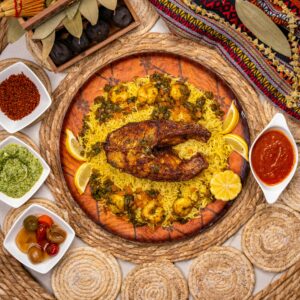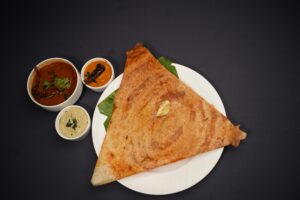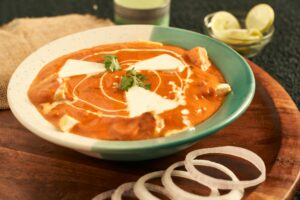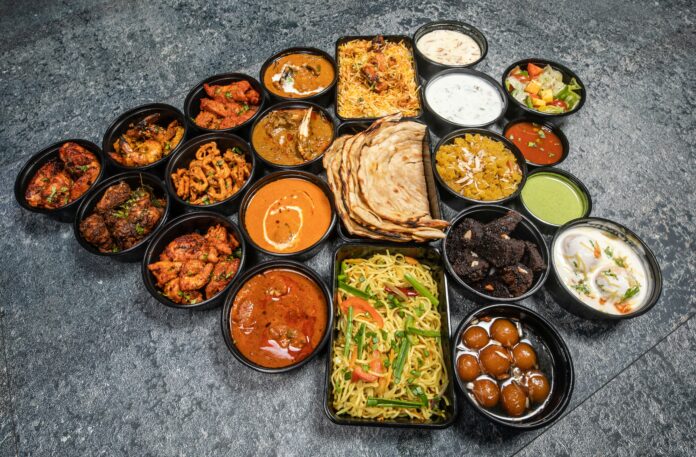5 top india dishes
The Indian culinary scene is a dynamic work of art embroidered with flavors, flavors and territorial specialties. Each dish tells a story, reflecting the culture, conventions and history of its place. Here we will investigate five notorious Indian dishes that showcase the differences and richness of Indian cuisine.
- Biryani

Origin and Variations
Biryani is a fragrant rice dish that traces its roots back to Persian cuisine, eventually becoming a beloved staple across the Indian subcontinent. It is said to have been brought to India by Mughal emperors, and over the centuries, it has evolved into various regional forms. The most famous varieties include Hyderabadi Biryani, Lucknowi (Awadhi) Biryani, and Kolkata Biryani, each boasting unique ingredients and cooking techniques.
Ingredients and Preparation
The essential components of biryani are basmati rice, marinated meat (usually chicken, mutton, or beef), and a blend of spices. The meat is typically marinated with yogurt and spices like turmeric, cumin, and garam masala before being layered with partially cooked rice and then cooked together in a sealed pot, a method known as “dum.” The cooking process allows the flavors to meld beautifully, resulting in a dish that is aromatic and deeply satisfying.
Social Significance
Biryani is regularly served amid extraordinary events such as weddings, celebrations, and family social occasions, making it a dish of celebration. It symbolizes neighborliness and is a centerpiece for communal eating.
2. Dosa

Origin and Variations
Originating from South India, dosa is a fermented crepe made from rice and urad dal (black gram). While its exact origins are debated, it is believed to have been enjoyed since ancient times. Dosa has many regional variations, such as the crispy plain dosa, the thicker set dosa, and the stuffed masala dosa filled with spiced potatoes.
Ingredients and Preparation
The batter for dosa is made by soaking rice and urad dal, grinding them to a smooth paste, and fermenting it overnight. This fermentation process gives dosa its characteristic tanginess and crisp texture. The batter is spread thinly on a hot griddle, and it’s typically served with chutneys and sambar (a spicy lentil soup).
Social Significance
Dosa is a staple breakfast dish in South Indian families and is moreover delighted in as a nibble or fundamental course all through the day. It speaks to the region’s agrarian hones, exhibiting the flexibility of rice and lentils.
- Butter Chicken

Beginning and Variations
Butter chicken, or “Murgh Makhani”, originates from Delhi and is part of Punjabi cuisine. He was created by the chefs at the Moti Mahal eatery in the 1950s, who combined remaining chicken with a wealthy tomato-based sauce, butter, and cream. Over the a long time, it has ended up a worldwide minister for Indian cooking.
Fixings and Preparation
The dish generally includes marinated chicken cooked in a tandoor (terracotta stove) and then simmered in a sauce made from tomatoes, butter, cream and a mixture of flavors such as cumin, coriander, and garam masala. The result is a rich, gently spiced curry that sets superbly with naan or rice.
Social Significance
Butter chicken is more than fair a dish; it is a confirmation to the combination of conventional Indian cooking with Western impacts. It is a favorite at Indian eateries around the world and regularly serves as an presentation to Indian cooking for newcomers.
4. Paneer Tikka

Origin and Variations
Paneer tikka is a popular vegetarian appetizer that originated in North India, particularly in Punjab. The dish showcases the versatility of paneer (Indian cottage cheese) and has become a staple in Indian restaurants.
Fixings and Preparation
To make paneer tikka, 3d shapes of paneer are marinated in a blend of yogurt and flavors, counting ruddy chili powder, turmeric, and garam masala. The marinated paneer is at that point speared with chime peppers and onions and barbecued or heated until charred and smoky. It is frequently served with mint chutney and lemon wedges.
Cultural Significance
Paneer tikka is a dish that reflects the vegetarian traditions of Indian cuisine, providing a delicious alternative to meat-based dishes. It is often enjoyed at gatherings, parties, and festivals, symbolizing the inclusivity of Indian dining.
5. Chaat massala

Beginning and Variations
Chaat is a popular road surface that originated in northern India, particularly Delhi and Uttar Pradesh.. It includes a assortment of savory snacks that are frequently served as appetizers. Each locale has its claim take on chaat, driving to an blast of flavors and surfaces.
Ingredients and Preparation
Chaat typically includes a base of fried dough or crispy puris topped with a mix of potatoes, chickpeas, yogurt, tamarind chutney, and a sprinkle of spices. Popular variations include Aloo Tikki Chaat, Pani Puri, and Bhel Puri. Each chaat is characterized by its balance of sweet, tangy, and spicy flavors.
Cultural Significance
Chaat embodies the spirit of Indian street food culture. It is a favorite among locals and tourists alike, often enjoyed in bustling markets and roadside stalls. The dish encourages communal eating, with friends and family sharing different varieties, highlighting the social aspect of Indian dining.
These five dishes—biryani, dosa, butter chicken, paneer tikka, and chaat—represent just a fraction of India’s rich culinary heritage. Each dish carries with it the essence of its region, showcasing the country’s diverse ingredients, flavors, and cooking techniques. Whether enjoyed at a local restaurant or prepared at home, these dishes connect people through the shared experience of food, celebrating the vibrant culture of India.
Check out this post :https://buzzrival.com/5-moroccan-foods-you-must-eat/
Check out our insta : https://www.instagram.com/bsm_kitchens_design/



